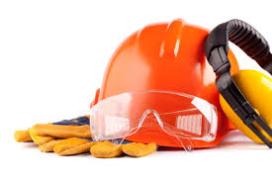

New occupational hazards in the construction sector
Using large format bricks, tiles and façade trims means a greater risk of accident and injury. This problem is compounded by the dangers of using more chemicals, sun exposure, an ageing workforce, and other psychosocial factors.
One trend currently affecting the building trades is large format bricks and tiles for tiling or façade embellishing stones, explains Ismael Sánchez-Herrera, Chairman of AEPSAL, the Association of Occupational Health & Safety Specialists. “Each of these blocks can weigh more than 20 kilos so positioning them requires a tremendous physical effort, so there’s a risk of chronic injury.” According to this expert, “brick and plaster laying robots are already coming onto the market, but I haven’t seen automated handling of this kind of load yet.” So, “using exoskeletons for these physically demanding tasks” should be a priority for the future.
Another new risk for building workers is the increasing use of chemical substances and elements, “and workers don’t always know enough about the problems involved and the diseases they can cause.”
Silicosis
One of the specific risks facing the construction sector in the coming years will be monitoring and managing exposure to respirable crystalline silica (RCS) in the workplace, says Dr Anna Oubiña Albadalejo of External Prevention Services, ASPA-ANEPA. Any operation involving crushing, cutting, drilling, carving, or grinding products or raw materials containing crystalline silica can release particles into the work environment that workers can inhale.” And chronic exposure to RCS can cause silicosis.
Dr Oubiña says that “monitoring long-term RCS exposure should be a priority for the construction industry.” And, in this regard, she says that “the External Prevention Services are ready to provide the quality technical advice that the sector needs.”
Conventional Threats
The European Agency for Safety & Health at Work warns that many currently emerging risks coincide with the traditional ones but are now framed in a new work scenario. AMAT, the Association of Mutual Insurance Companies for Work Accidents, gives a reminder that “based on data from 2020, the leading causes of accidents in the construction sector are overexertion (31.6%), falls (18%), stumbles and blows (16.4%) or cuts (7.9%). These figures show that prevention measures must stay focused on conventional risks.”
The National Institute for Safety and Health at Work (INSST) has identified emerging risks for the sector. These include the trend towards sustainable construction and environmental waste management, an ageing workforce, and psychosocial risks, which are increasingly prevalent in all industries, and exposure to chemical agents and solar radiation.
Against this backdrop, AMAT’s managers affirm that businesses need to stay focused on “training workers, on health monitoring, strengthening the prevention technician’s role, and individual worker’s responsibility.”
Organisational Changes
María José Leguina is head of the Labour Department at the National Builders’ Confederation. She points out that “it’s essential to be aware that new materials, working practices and technologies will lead to organisational changes. These changes will entail, among other things, the implementation of increasingly demanding health & safety management systems. For example, integrating occupational risk prevention into the BIM methodology.”
Javier Díaz is the technical manager at Asepal (Association of Personal Protective Equipment Companies). He reminds us that the Covid‑19 pandemic has revealed the true purpose of PPE (personal protective equipment): to serve as a last line of defence, protecting the wearer’s health & safety. And he warns that “the process of selecting and using PPE presents new challenges for the occupational health & safety manager in all sectors, including construction.”





